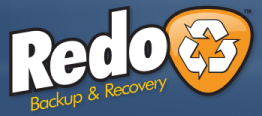
Been trying out
Redo Backup and Recovery to backup and restore a system partition for Windows XP. (
Mentioned earlier by ha14.)
Sample set up:
0. Prepare a minimal updated Windows XP (mine may have been somewhere in the neighborhood of 7GB).
1. Download and burn the Redo live cd.
2. After booting from the live cd passed the initial menu, choose the menu item to install to USB device (8GB was more than enough) and follow the screens...
Sample backup usage:
1. Boot from the USB device (here, this was much faster than via optical media).
2. Choose backup and follow the screens -- choose to save the Windows XP partition to the USB device.
3. Wait a bit (less than 10 minutes here).
Sample restore usage:
1. Boot from the USB device.
2. Choose restore and follow the screens -- choose to restore the image from the USB device.
3. Wait a bit (less than for backing up here).
Recommend testing with VirtualBox first. FWIW, the following was a nice tip for getting VirtualBox to boot from USB:
Boot a USB Flash Drive in VirtualBox @ pendrivelinux.com
The live cd comes with a few useful apps including gparted, palimpsest (aka Disk Utility), TestDisk, a disk wiper, and Chromium.
Redo appears to be a wrapper around partclone which IIUC is used by Clonezilla (also nice but more complicated to figure out IMHO).
Update: Found a tutorial for an older version (0.9.5?):
http://www.oakdome.c...e-with-usb-drive.php -- fwiw, the version I used (1.0.1) looks different (especially what shows up after the initial boot menu), but the general flow seems similar enough.
multi usb note
Had some difficulty using the live cd iso from YUMI or Sardu (may have been both) so went with a dedicated USB device.
